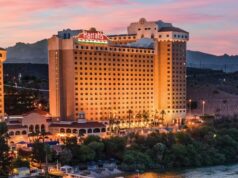
NATIONAL REPORT—In September 2008, NUS Consulting Group, which specializes in utility cost management, reported that Seattle had the highest combined water and sewer rates in the country, charging $14.28 per thousand gallons, up 5.1 percent from last year. Seattle’s costs are followed by: Atlanta with combined rates of $13.28; Boston at $12.96; San Francisco at $12.76; and Portland, Maine at $11.67.
In total, 51 major water markets were analyzed and although the rates varied, they all shared one thing in common: rates are increasing and expected to go up even more. The bulk of these charges is for purchasing water, but a sizeable amount is for infrastructure improvements. In many cities, infrastructure is out of date or simply cannot accommodate current water demands.
A perfect example is San Diego, where water-related rates are going up significantly. In fact, water charges are steadily increasing about every six months. According to the city, the following water rate increases have already been implemented, accepted, or pending approval:
• July 1, 2007: 11.2 percent increase to improve infrastructure;
• January 1, 2008: 2.9 percent increase to cover rising cost of buying water on wholesale market;
• July 1, 2008: 6.5 percent increase to upgrade infrastructure;
• January 1, 2009: 6.26 percent increase to cover rising cost of buying water on wholesale market; and
• July 1, 2009: 6.5 percent increase to improve infrastructure.
This represents more than a 33 percent increase in water charges in two years. And, unfortunately, this is not just a localized phenomenon. A search on Yahoo! for current news stories associated with “water rate increases” found nearly 3,000 reports from U.S. cities.
Spiraling increases in water rates has caught many hotel properties off guard. Traditionally, the cost of water—compared to other utility costs—has been relatively stable and inexpensive. But, it appears water rates are now starting to eat a hole in hotel owner’s bottom lines.
Where Does the Water Go?
Hotels are extremely large-volume users of water, according to the Florida Department of Environmental Protection. The department estimates that about 210 gallons of water are used per day, per occupied guestroom. And, although it can vary depending on landscaping needs, the bulk of this water is used for laundry and public restrooms as well as hotel guestroom showers, sinks, toilets, and urinals.
One method for saving water is allowing hotel guests to decide if linens and towels can go another day before washing and replacing. And, this has been well-received by hotel guests. The Green Housekeeping Assn. estimates that in the 10 years these procedures have been implemented, as many as 90 percent of hotel guests have participated.
The bulk of the other water conservation savings can be achieved through equipment changes, mostly in guest and public restrooms. These include installing or retrofitting such fixtures as:
• Sensor-operated or “touch-free” faucets. The U.S. Food and Drug Administration (FDA) estimates that switching from manual to sensor-operated faucets can save slightly more than 1 gallon of water per hand washing. This is because the sensor-operated faucets shut water off automatically when the user’s hands leave the active area.
• Low-flow showerheads. A 10-minute shower can require as much as 42 gallons of water. A low-flow showerhead can cut water usage by half, without sacrificing the “feel” of the conventional shower.
• 65-second toilets. These systems use sensors and determine how long the toilet has been used. When in use for more than 65 seconds, 1.6 gallons of water is flushed, assuming solid waste; less than 65 seconds, 1.1 is released. Similar, manually-operated systems are known as high-efficiency or dual-flush toilets.
• Waterless urinals. Waterless urinals are attracting considerable interest by major hoteliers like Hilton, which is installing them in various properties around the world. Waterless units are easy to install because plumbing requirements are minimal. Urine passes through a trap filled with a sealant. As it fills, it flows under the trap into a tube connected to a drainpipe, much the same way a conventional urinal works.
In addition, a lot of water used in hotels is simply wasted in the form of leaks. A leaking toilet can waste more than 50 gallons of water each day and a dripping faucet or showerhead can waste up to 1,000 gallons per week.
Energy Can Also Be Saved
Because most water and sewer charges are based on water usage, the less water used, the greater the savings. But, this is not the only savings since most of the water used in a hotel property must be heated. For example, it is estimated that by switching to low-flow showerheads, a hotel property can save as much as $200 per year, per shower—depending on local utility charges and usage frequency.
And, many hotels can actually make money by installing water-efficient technologies. Scores of cities and states have hotel rebate programs that pay $20 to more than $120 per fixture when an older flush valve toilet or urinal is replaced with water-efficient or no-water models.
As a major water user, the lodging industry has an important responsibility to conserve water. The good news is hotels can operate more sustainably, save money, and even gain a competitive edge simply by reducing water usage.
Klaus Reichardt is founder and managing partner of Waterless Co. LLC, Vista, Calif. Reichardt founded the company in 1991 with the goal to establish a new market segment in the plumbing fixture industry with water conservation in mind. The company’s product, the Waterless No-Flush urinal, works completely without water.






